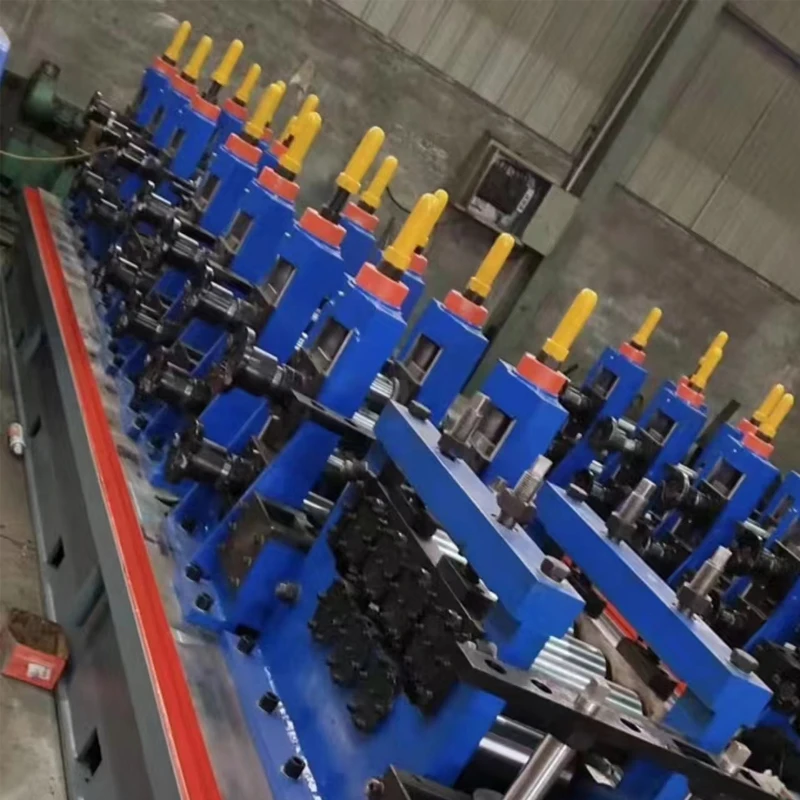decoiler sheet metal
Understanding Decoilers for Sheet Metal An Essential Component in Metal Fabrication
In the world of metal fabrication, the processing of sheet metal is integral to a myriad of applications, from automotive manufacturing to intricate architectural designs. An often overlooked but crucial piece of machinery in this process is the decoiler. Decoilers are designed to uncoil and feed rolled sheet metal into various forming and processing equipment. This article delves into the significance of decoilers, their operation, types, and vital considerations for their use.
The Importance of Decoiling
Sheet metal is usually supplied in rolls, and before it can be shaped or cut into specific designs, it must be uncoiled smoothly and accurately. Decoilers serve this purpose by holding the metal roll securely and ensuring the sheet metal unwinds evenly, preventing any damage such as kinks or distortions. This efficiency not only enhances the production rate but also maintains the quality of the finished products.
Decoilers are particularly essential in high-volume manufacturing settings where the continuous flow of materials is critical. For instance, in automotive assembly lines, the seamless feeding of sheet metal into stamping machines can significantly reduce production time and costs.
How Decoilers Work
The operation of a decoiler is relatively straightforward yet requires precision. The machine typically consists of a main frame, a feed mechanism, and sometimes a tension control system. When a metal roll is mounted onto the decoiler, the feed mechanism, often powered by electric or hydraulic systems, engages to unwind the sheet metal.
The decoiler’s tension control system is vital as it regulates the amount of pressure applied to the metal as it is fed into downstream processes. If the tension is too high, it can cause the metal to deform or even snap. Conversely, insufficient tension can lead to excessive slack, which may result in misfeeding and jammed machinery.
Types of Decoilers
There are several types of decoilers available in the market, each suited for different applications and requirements
1. Manual Decoilers These are typically simpler machines that require manual effort to feed the metal. They are often used for smaller production runs or in workshops where space and budget constraints are present.
decoiler sheet metal

2. Powered Decoilers These machines are equipped with electric or hydraulic drives and can handle larger and heavier rolls of sheet metal. They are ideal for industrial settings where efficiency and speed are prioritized.
3. Automatic Decoilers These are advanced systems that integrate with automated production lines. They often include features such as automatic tension control and sensors to detect and correct feeding issues in real-time, ensuring a seamless workflow.
4. Uncoiler/Recoiler Combinations Some systems include both uncoiling and recoiling capabilities, allowing for increased versatility in metal processing operations.
Key Considerations When Choosing a Decoiler
When selecting a decoiler for sheet metal processing, several factors must be taken into account
- Material Type and Thickness The type of metal and its thickness significantly influence the decoiler's required capacity and design. Ensure the decoiler can handle the specific materials you plan to work with.
- Roll Size and Weight Decoilers must be capable of supporting the weight and diameter of the sheet metal rolls used in your production line.
- Integration with Existing Systems Consider how the decoiler will fit into your current workflow. It's essential to select a model that can easily integrate with other machinery, such as shears or presses, for optimum efficiency.
- Safety Features Given the heavy and often hazardous nature of metal processing, safety features should not be overlooked. Look for machines equipped with emergency stops, safety guards, and proper training provided for operators.
Conclusion
Decoilers are fundamental to the smooth and efficient processing of sheet metal in various industries. Understanding their functionality, types, and appropriate selection criteria can lead to improved productivity and better quality in the final products. Investing in the right decoiling equipment ultimately enhances workflow and can significantly impact the bottom line in metal fabrication operations. As fabrication technologies evolve, so too do decoiler designs, promising increased efficiency and versatility for the future.
-
High Frequency Straight Seam Welded Pipe Production Line-BzZhou Xinghua Machinery Equipment Manufacturing Co., LTD.|line pipe steel&welded gas pipeNewsJul.30,2025
-
High Frequency Straight Seam Welded Pipe Production Line-BzZhou Xinghua Machinery Equipment Manufacturing Co., LTD.|High Precision&Automated SolutionsNewsJul.30,2025
-
High Frequency Straight Seam Welded Pipe Production Line - BzZhou Xinghua Machinery Equipment Manufacturing Co., Ltd.NewsJul.30,2025
-
High Frequency Straight Seam Welded Pipe Production Line-BzZhou Xinghua Machinery Equipment Manufacturing Co., LTD.|Precision Welding, High EfficiencyNewsJul.30,2025
-
High Frequency Straight Seam Welded Pipe Production Line|BzZhou Xinghua|Precision Welding&EfficiencyNewsJul.30,2025
-
High Frequency Straight Seam Welded Pipe Production Line - BzZhou Xinghua|Precision Engineering&EfficiencyNewsJul.30,2025


